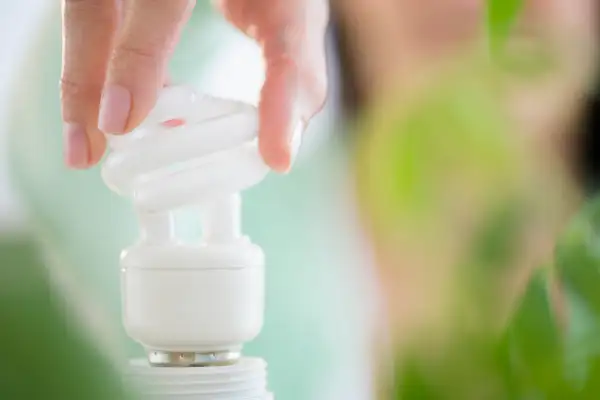What You Need to Know About LED Bulbs

Just a few years ago, using energy efficient light bulbs meant, quite literally, going green—thanks to the ghoulish tint those spiral-shaped compact fluorescent bulbs cast. But with high tech LED (light-emitting diode) bulbs now selling at fairly affordable prices (about $6 to $10 per 75-watt equivalent bulb), you can easily lower your energy costs, help the environment, and illuminate your house with bright, white light.
Still, buying the bulbs isn’t as simple as just shopping for the “watt equivalency” of the standard bulbs you’re replacing. Here are five things to think about before you invest in LEDs.
LEDs can brighten a dimly lit house.
If your living space is short on light fixtures and lamps, you can use LEDs to brighten interiors by selecting a watt equivalency that’s higher than that of the old bulbs, says New Haven lighting designer Mark Loeffler. Many fixtures contain a warning not to use anything higher than a 60-watt bulb because the fixture can’t take the heat higher wattage bulbs generate, and it would therefore be a safety hazard. But there’s no problem using a 100-watt equivalent LED bulb, which is only about 17 watts and therefore well under the safety limit of a 60-watt maximum fixture. You get lower energy bills and also two times more light output (measured in lumens, also labeled on product packaging), possibly saving you from buying expensive new floor lamps or installing additional hard-wired fixtures (at $300 to $800 each).
You'll need new dimmers.
If you’re adding LED bulbs to fixtures on dimmers, make sure to select dimmable LEDs—and plan to replace your dimmer switches too. Using dimmable LEDs is not as simple as just screwing them into your existing fixtures. Dimmers designed for standard incandescent bulbs will often cause LEDs to buzz or hum annoyingly. You need to swap in an LED-friendly dimmer—better yet, one that’s specifically listed on the bulb packaging as being compatible with the bulb. You’ll pay about $25 for the switch and perhaps another $25 to have it professionally installed (with a $100 to $200 minimum labor charge).
LED bulbs may have a shorter lifespan than you'd expect.
Screw-in LEDs require no retrofitting into existing sockets because they contain not just the light-emitting diode but also the electronic driver that makes it work. (In a special LED fixture, by contrast, the driver is in the light fixture and the bulb contains only the diode.) “The ads say LED bulbs will last for 40 years, but it’s the driver that determines the life of the bulb,” says Chesapeake, Va., kitchen designer Dave Alderman. “You’re lucky to get a five-year warranty on bulbs with built-in drivers.” Swapping in LED trim kits with higher quality drivers would cost about $50 to $85 each, and that’s when you can expect super long bulb life.
LED bulbs come in a wide range of colors.
Take a look at the LED packaging to see the product's K ratings. K stands for Kelvin, a measure of “color temperature” (the color of light), and you can find bulbs anywhere from 2,700 to 6,500 Kelvin. In general, bulbs up to 3,000k produce warm (slightly yellow) light that’s relaxing and therefore ideal for general living spaces; bulbs from 3,200k to 4,500k are cool (white) light that’s perfect for workspaces such as kitchens, bathrooms, and garages; anything over 4,600k is considered daylight and is best used for outdoor and security lighting. Another measure of color quality is CRI—color rendering index—which indicates how accurate colors look in the light from the bulb. Make sure LEDs you buy have a CRI of 80 or higher.
